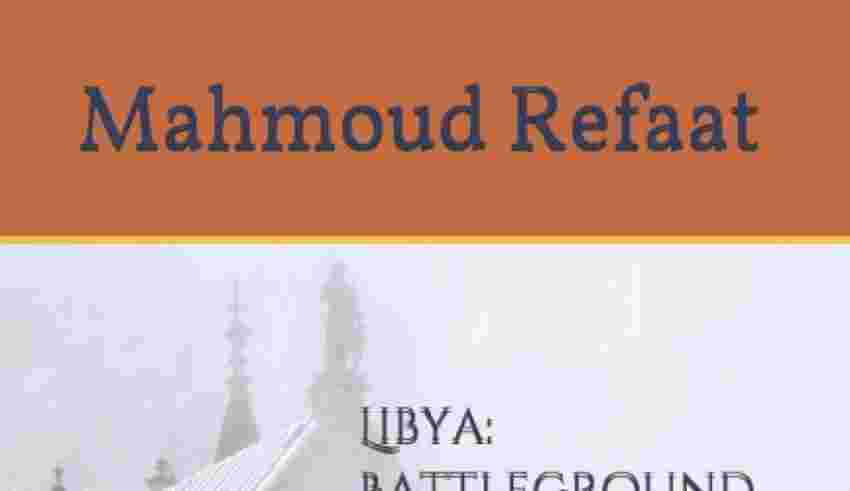
Libya: A Battleground for International Antagonism
By
Mahmoud Refaat
&
Álvaro Pérez Cárdenes
Bernardo Nascimento
Georgios Mavrodimitrakis
The region where modern day Libya is situated has a rich history concerning the different societies that have passed there. From evidence of the Berber people to the Phoenicians, and from the Islamic rule to the Ottomans, Libya has been
the stage of many struggles amongst a variety of ethnic groups (St John, 2017). In the 20th century, Libyan history was “an extraordinary odyssey: from Ottoman backwater to Italian colony; from conservative monarchy to revolutionary regime; from rags to riches; and from brinkmanship to a grudging… statesmanship” (Vandewalle, 2012, p. 1). Indeed, during the previous century, the North African region witnessed many changes in power, with the Italians gaining its control after defeating the Turks and merging Tripolitania, Cyrenaica, and Fezzan into modern day Libya. The status quo in Libya only changed decades after, with the end of the Second World War and the new architecture of the international system. Riding the wave of self-determination, a federal monarchy was instituted in Libya with King Idris at the helm. However, this institution would soon be erased, following a coup d’état orchestrated by Gaddafi in 1969 which established the Libyan Arab Republic. This last occurrence marked what would be decades of turbulence, characterized by a mixture of relative economic prosperity and domestic repression, that would fracture Libyan society for years to come.
Libya has been a country absolutely riddled with conflict, especially after 2011 and the end of Gaddafi’s regime as a power vacuum was created in the country. In December 2010 began the so-called Arab Spring, a wave of revolutions that resulted in regime changes in countries such as Tunisia, Egypt and Libya. Far from a miracle liberation, the period has since been hallmarked by increased instability and oppression. In Libya, meanwhile, this led to a bloody civil war between Gaddafi’s regime and a coalition of civilians and foreign forces such as France, the UK, the UN and many European States, that ended with the death of the dictator. After the fall of Gaddafi’s regime, the country simply became an entity on the map. In this state, two political centers are formally distinguished: the Government of National Accord (GNA) led by F. Sarraj in Tripoli and the House of Representatives in Tobruk (in the east), supported by the Libyan National Army (LNA) led by Marshal H. Haftar. The civilian population was terribly impacted by street violence, access to food was perilous and basic health care was no longer assured. This has contributed, in part, to the ongoing worldwide refugee crisis, which has seen thousands flee Libya, lit the sparks that led to a new civil war between East and West in 2014. Power rests solely with warlords and tribal sheikhs, due to the absence of a strong governmental structure. The situation has been exploited by various international players, which have entered the Libyan conflict in order to assure their personal benefits in a key location in the global sphere. On the other hand, countries like Russia and China have taken a more cautious approach by keeping some distance and not getting completely involved in the situation.
Until recently, tensions have not subsided: the two sides still clash, between the west representing the internationally backed government to achieve peace, and Haftar’s self-proclaimed national army in the east. The west is also supported by Turkey, which regularly sends its armed mercenaries to support Sarraj’s forces, while the east enjoys the support of Russia, which also sends its armed mercenaries to support Haftar’s camp. The latter is also unofficially supported by France, which sees in him the warlord who will oppose radical Islamism and particularly ISIS which has been established in Syrte since 2014. A new national government was sworn in on March 15, 2021, symbolizing a hoped-for reconciliation of this divided country. Nonetheless, currently, tensions have not really ceased, and Haftar still refuses to recognize this government. A truce and ceasefire is currently in place, and foreign countries have committed to withdrawing their troops from Libya.
Taking into consideration the current state of affairs in the Libyan state – a fragmented society, broken institutions and the lack of orientation – this study will, for the next pages, provide an in-depth analysis of the presence of different state actors in the North African region. After providing this documentation, this study will make some final remarks concerning recommendations for future actions in Libya. These recommendations will emphasize the need for strengthening local and regional cooperation in Libya, limiting foreign interference that prolongs the conflict and supporting institutional capacity that would guarantee transparency and stability for the country.














